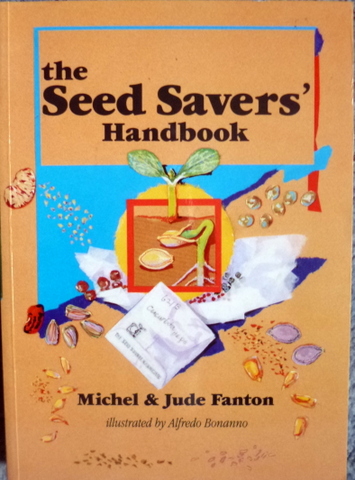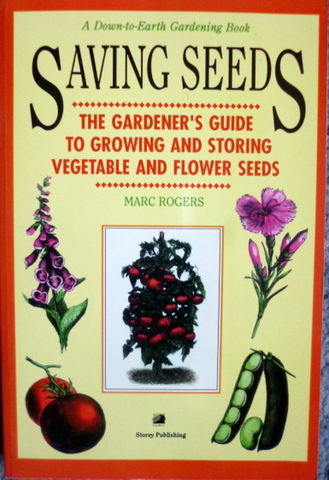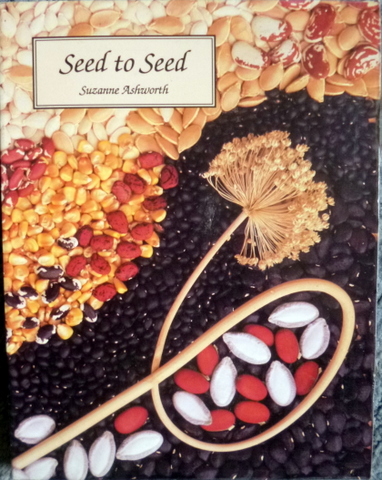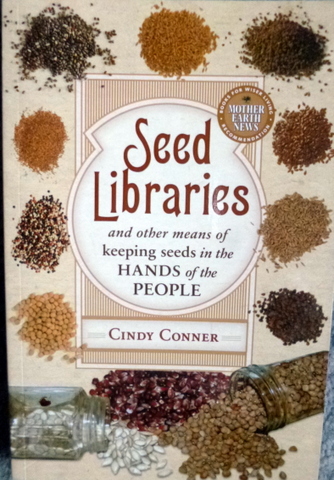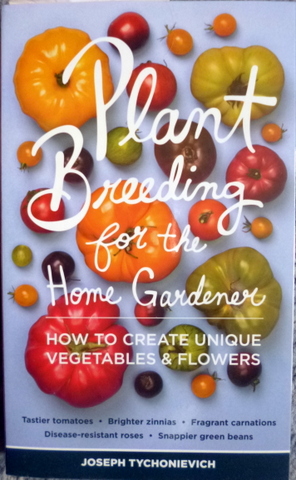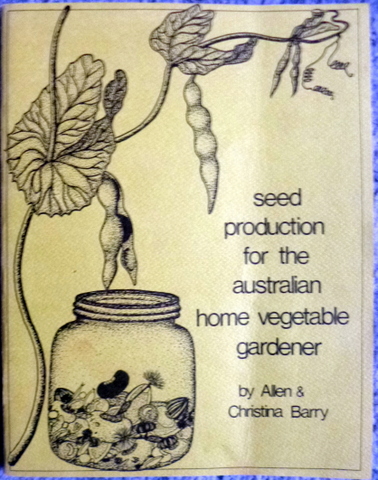The Seed Savers’ Handbook – Michel & Jude Fanton – Seed Savers’ Network (AUS) 1993 ISBN 0 646 10226 5 – This book was written by the founders of the Australian Seed Savers’ Network and is the seminal work on the subject of seed saving. Part one of the book covers the issues, about the seed savers’ network and the importance of seed saving and biodiversity. Part two covers the practicalities around seed saving – which seeds to save, purity and production, selecting and collecting seed, drying and cleaning seed and planning a seed garden. Part 3 is the technical bit of how to save seeds of 117 vegetables, culinary herbs and edible flowers. No photos, some line drawings.
Saving Seeds – Marc Rogers – Storey Publishing (US) 1990 ISBN 0 88266 634 7 – Part one of this book gives you basic information on the theory and practice of seed saving including why you should save seeds, what annuals, biennials and perennials are, pollination, collecting, extracting, drying, testing and storing seeds. Part two covers seed saving of vegetables by twelve categories, listed by plant family. Part three covers how to save the seeds of 61 flowering ornamentals. A few black and white photos and line drawings.
Seed to Seed – Suzanne Ashworth – Seed Savers’ Exchange Inc. (US) 1991 ISBN 0 9613977 7 2 – Section One covers the theory of vegetable seed saving such as why we should save seeds, botanical classifications, pollination and flower structure, maintaining varietal purity, cleaning and storing seeds. Section 2 Covers how to save seeds for a series of vegetables divided up into the 8 most common vegetable families, including 127 individual vegetables. Section 3 covers other families with vegetable members – 12 vegetable families including 23 individual vegetables. Some black and white photos.
Seed Libraries and other means of keeping seeds in the hands of the people – Cindy Conner – New Society Publishers (CAN) 2014 ISBN 978 0 86571 782 4 – As the title would suggest, this is not a technical book about the process of saving individual seeds, although there is a chapter on seeds themselves, how to test them, where to find them etc. The book starts off with a discussion of the seed saving movement and an in-depth analysis of why we should save seeds. The main thrus of the book is then about setting up a seed library, who to partner with, how to get started, packaging seed, attracting a patron, keeping things going and how to run a seed swap. There are a series of colour photo pages towards the front to be book, and a smattering of black and white photos throughout the rest of the book.
Plant Breeding for the Home Gardener – Joseph Tychonievich – Timber Press (US) 2013 ISBN 978 1 60469 364 5 – While this is not strictly a seed saving technical book it does give good information about how to use seed saving techniques (among others) to develop your own varieties. The book starts out with a brief history of plant breeding and moves on to how to develop goals for your plant breeding program, how to cross pollinate plants, why genetics matters, evaluating and selecting favourite varieties. The last two chapters cover advanced plant breeding techniques and a series of examples of how to breed selected flowers (8 types) and vegetables (6 types). There is very little in the way of illustration, just a few line drawings.
Seed Production for the Australian Home Vegetable Gardener – Allen & Christina Barry – Henry Doubleday Research Association (AUS) 1977 ISBN 0 9596360 0 5 – At only 40 pages this is more a pamphlet than a book, but is still contains a lot of good information. Chapter 1 covers why we should save seeds, chapter 2 covers the botanical classification of common vegetables and chapter 3 covers the flowers and pollination. Chapter 4 covers choosing a plant for seed, isolation distances and data for 29 vegetables. Chapter 5 covers dormancy and storage of seeds. No photos, some line drawings.



